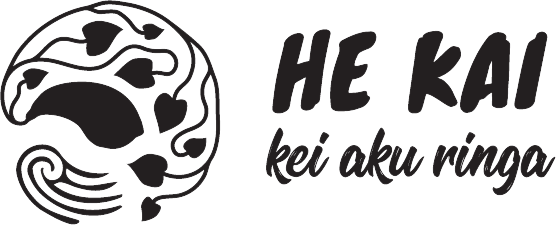09 Dec Māori solutions to participation in sports and physical activity
During October, Toi Tangata and Te Pūtahi-a-Toi, Massey University, hosted a one day Toi Ako wānanga. This event investigated the enablers, celebrations, barriers and solutions to Māori participating in sport and physical activity.
A wonderful range of speakers attended and gave their experiences and whakaaro on the how and why we, as Māori, navigate sport and physical activity. They also discussed the progress made to merge our mātauranga, tikanga and reo into physical activity and sport spaces.
Hei Tū, Hei Rangatira
Luke Rowe from Te Pūtahi-a-Toi summarised the kōrero with a framework Hei Tū, Hei Rangatira, categorising physical activity environments into:
Natural: how we can re-indigenise spaces and connection to movement;
Urban: how we use kawa and tikanga sport and physical activity in the modern world;
Political: equity in decision making and funding opportunities that reflect Māori aspirations and;
Cultural: where learning and playing reflects being Māori naturally and intrinsically.
Connecting to Atua
Connecting to the Atua through purposeful outdoor physical activity, especially for our tamariki, was a talking point for Te Miri Rangi from Health Promotion Agency. This whakaaro included re-indigenising thinking and translating that into everyday practice. In doing so, connection, whakapapa ki nga Atua, and living by the maramataka would become intrinsic. Similar themes emerged through korero from Paora Te Hurihanganui (Te Papa Taakaro o Te Arawa) who shared his stories growing up with this knowledge.
Normalising Te Reo Māori
Normalising te reo Māori through physical activity was a theme for all presentations. Darrio Penetito-Hemara of Toi Tangata discussed the growth of He Pī Ka Rere on a national scale and how kaimahi in our Kohanga Reo are taking up this mātauranga to get our mokopuna active through kaupapa Māori approaches. Eruera Lee-Morgan, from Te Puni Kokiri, demonstrated the Te Puni Reo App which helps strengthen te reo Māori use in everyday sports. He highlighted that parents, coaches and players can have access to kupu through their devices to help increase their reo use in sports settings.
Māoritanga and Self Identity
Jeremy Hapata shared an inspiring kōrero about the Bay of Plenty Steamers Rugby team. This team began as a group and franchise who struggled to perform, before discovering ownership over their self image as individuals and developing into a team to reckon with. Hapeta said the key ingredients of building a sense of self identity was tapping into how they saw their Māoritanga and their tino rangatiratanga which was the leading factor for performing on the field. His learnings and approach to changing the team’s mental space to drive their physical space was amazing and showed in their results in recent rugby campaigns.
Te Whetū Rehua
The team’s realisation of how their own Māoritanga can drive their positive results in other aspects of their lives also draws on the words of Karla Matua, from He Oranga Poutama. Matua mentioned the shift in the sector that she has observed over her time as a Kaiwhakahaere for sport and physical activity. She discussed Te Whetū Rehua, a longstanding framework for kaimahi empowering communities with varying levels of capabilities to incorporate mātauranga and reo within physical activity initiatives. She shared that the sector has progressed positively, now incorporating te ao Māori priorities into practice at the community level.
Governance and Representation
The sports performance sector has also made positive developments, as heard by Farah Palmer of Te Pūtahi-a-Toi and Board Member of Māori Rugby NZ. She discussed how far womens’ rugby has developed and shown the mana of women in the game. Palmer then discussed the long standing barriers to participation of Māori and women within the sport sector. She saw this as stemming from the lack of governance representation where fundamental change decisions are made.
Tino Rangatiratanga | Autonomy
Renei Ngawati, representing Māori Touch NZ, also discussed the importance of autonomy of Māori sports organisations who have struggled for funding at the price of tino rangatiratanga. This includes maintaining the right to live tikanga Māori within the sport sector without compromise to performing at the highest level as Māori, under a Treaty of Waitangi right. The commonality of these two kōrero were the need for high level decisions that addresses Māori aspirations for representation at every level without compromise to being Māori.
Te Pae Mahutonga
Sir Prof. Mason Durie’s 1998 Te Pae Mahutonga model of Māori Health Promotion has influenced health direction for Māori where te mana whakahaere (the need for Māori autonomy) and nga manukura (community leadership) are drivers for success in the other points of the health model: Mauriora (cultural identity); waiora (physical environment); toiora (healthy lifestyles), te oranga (participation in society).
Dr Geoff Kira and Prof. Meihana Durie summarised the continued need for research in Māori sport and physical activity to endure the drive for policy prioritising Māori aspirations reiterating the duality of nga manukura me nga mana whakahaere.
A big thanks to all those who participated in the day. It was so awesome to hear all the developments, the energy and the achievements of all those who have been on this journey for many years. To the decision makers, the players and those who commit to the hauora and wairuatanga of te iwi Māori, ngā mihi nui. Kia tika, kia mahi, whai hua!
Read extra coverage here.


